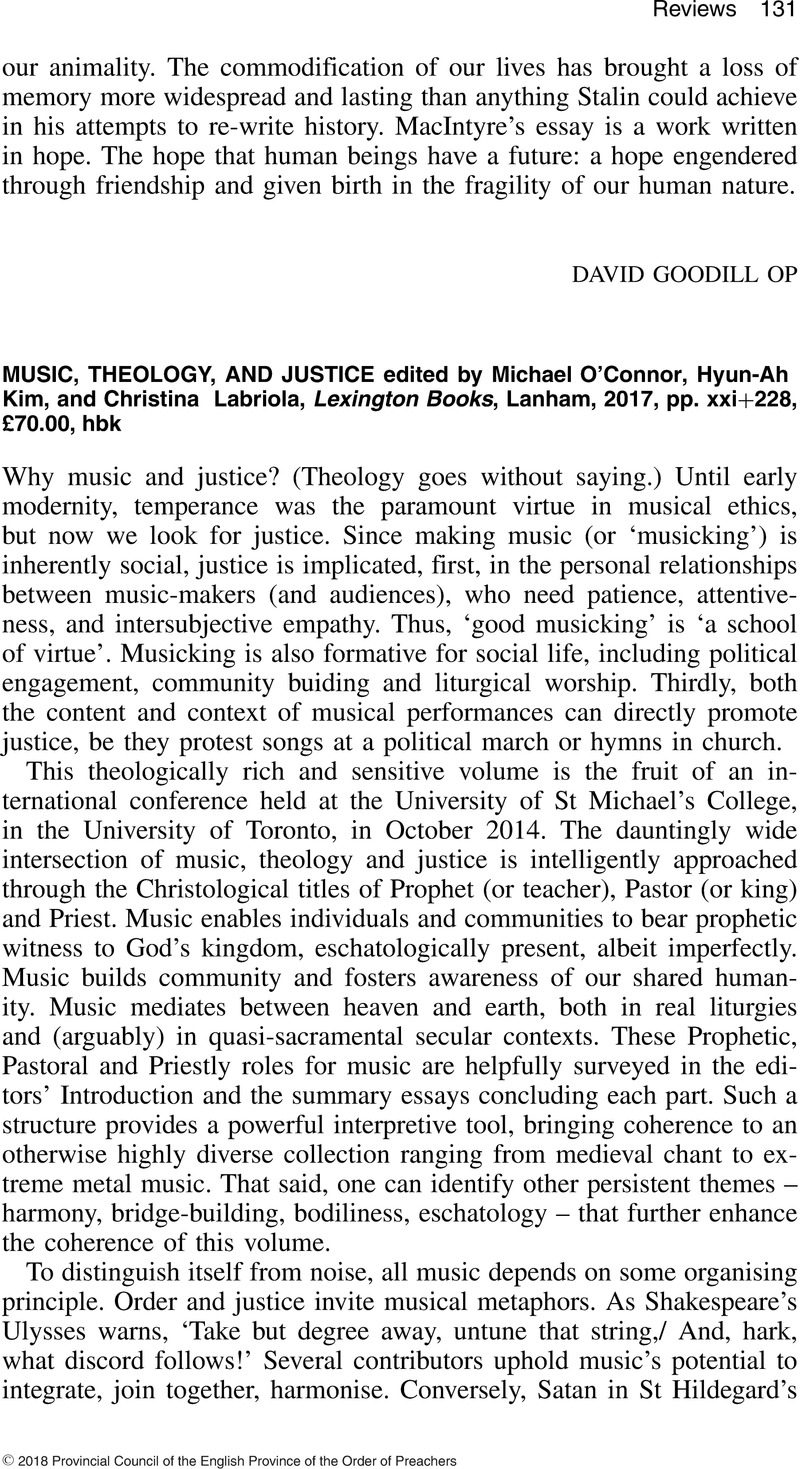No CrossRef data available.
Article contents
Music, Theology, and Justice edited by Michael O'Connor, Hyun-Ah Kim, and Christina Labriola, Lexington Books, Lanham, 2017, pp. xxi + 228, £70.00, hbk
Review products
Music, Theology, and Justice edited by Michael O'Connor, Hyun-Ah Kim, and Christina Labriola, Lexington Books, Lanham, 2017, pp. xxi + 228, £70.00, hbk
Published online by Cambridge University Press: 01 January 2024
Abstract
An abstract is not available for this content so a preview has been provided. Please use the Get access link above for information on how to access this content.

- Type
- Reviews
- Information
- Copyright
- Copyright © 2018 Provincial Council of the English Province of the Order of Preachers


